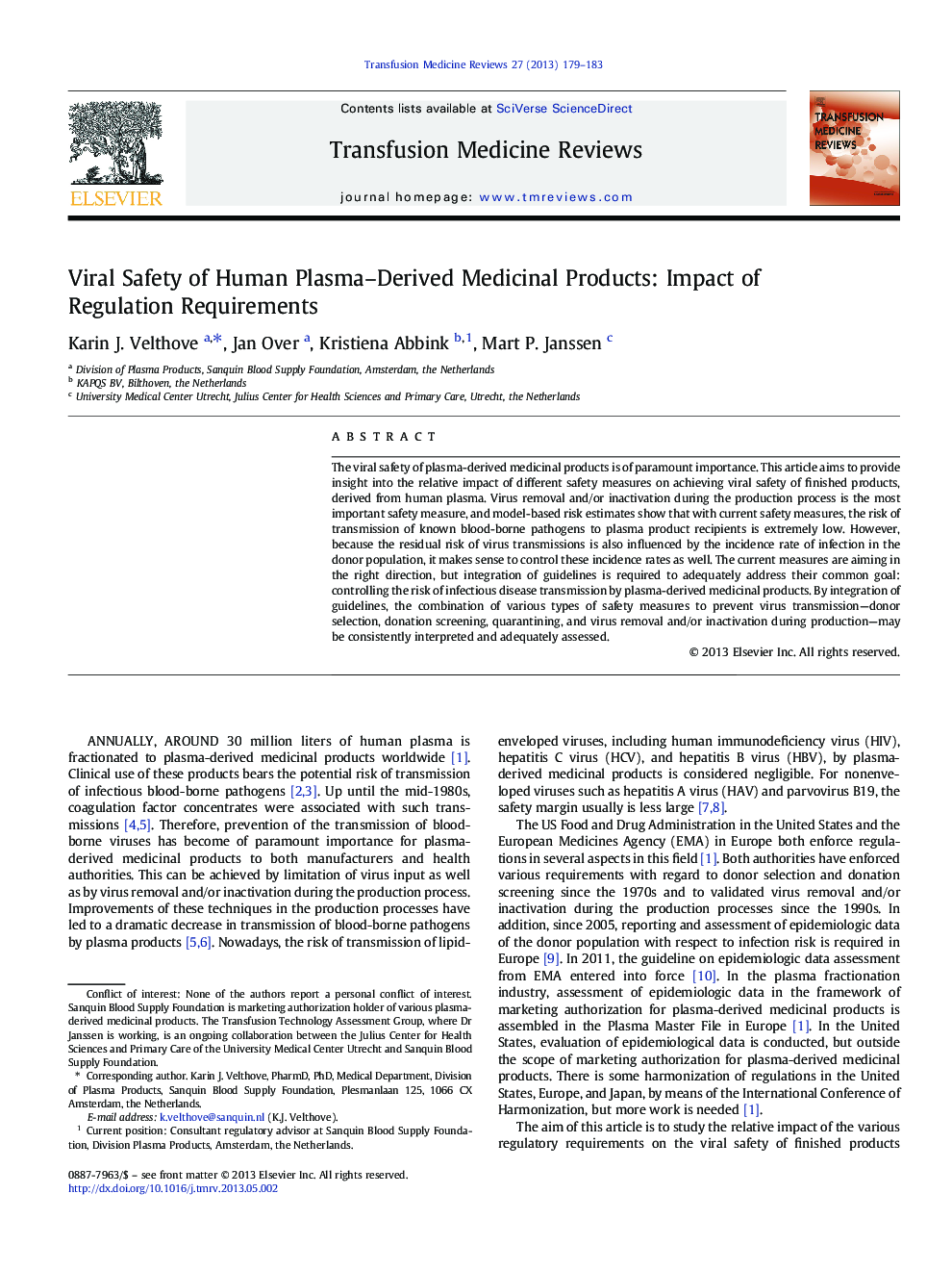| Article ID | Journal | Published Year | Pages | File Type |
|---|---|---|---|---|
| 6114362 | Transfusion Medicine Reviews | 2013 | 5 Pages |
Abstract
The viral safety of plasma-derived medicinal products is of paramount importance. This article aims to provide insight into the relative impact of different safety measures on achieving viral safety of finished products, derived from human plasma. Virus removal and/or inactivation during the production process is the most important safety measure, and model-based risk estimates show that with current safety measures, the risk of transmission of known blood-borne pathogens to plasma product recipients is extremely low. However, because the residual risk of virus transmissions is also influenced by the incidence rate of infection in the donor population, it makes sense to control these incidence rates as well. The current measures are aiming in the right direction, but integration of guidelines is required to adequately address their common goal: controlling the risk of infectious disease transmission by plasma-derived medicinal products. By integration of guidelines, the combination of various types of safety measures to prevent virus transmission-donor selection, donation screening, quarantining, and virus removal and/or inactivation during production-may be consistently interpreted and adequately assessed.
Related Topics
Health Sciences
Medicine and Dentistry
Hematology
Authors
Karin J. Velthove, Jan Over, Kristiena Abbink, Mart P. Janssen,
